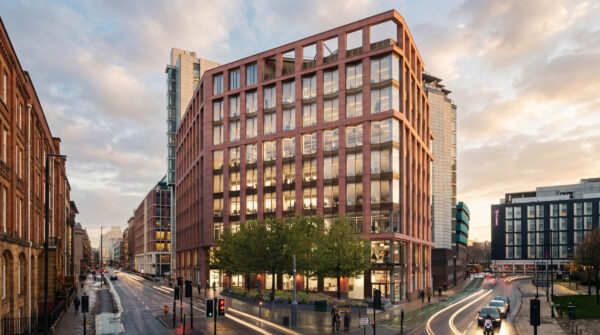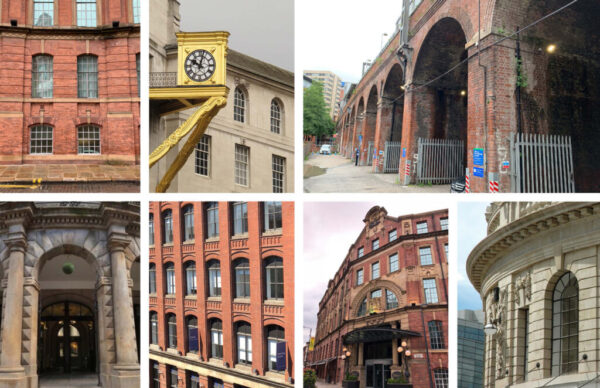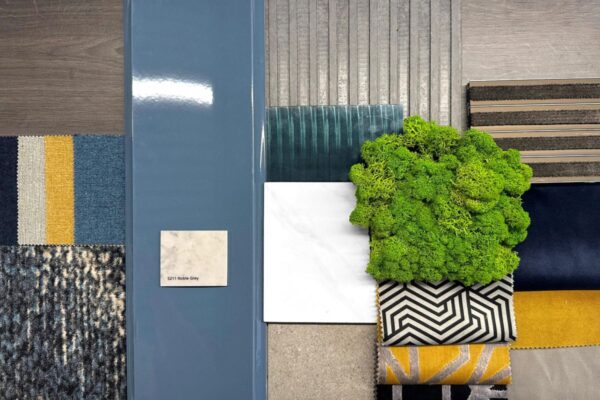2 Sovereign Square
Room with a view
01 Introduction
The new Hyatt hotel completes the regeneration of the award-winning Sovereign Square.
Restaurant, bar and café areas sit within a double height colonnade space spilling out the rain gardens and water features of the urban parkscape. At roof level, an expansive bar-restaurant takes in panoramic views of the city.
The site is situated within Sovereign Square which was the first public realm project in the centre of Leeds for a generation, and is an integral part of a wider masterplan vision from Leeds City Council to regenerate the South Bank Area. The site benefits from excellent public transport links, particularly Leeds Train Station with the building been highly prominent from the station platforms – putting a green park-scape, food, leisure and hospitality on the stations doorstep.
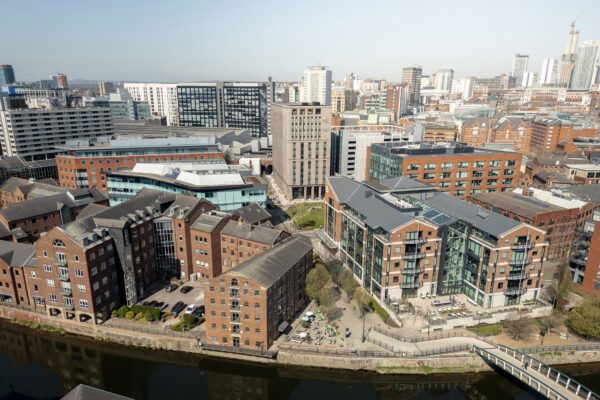
02 Project Narrative
A contemporary reinterpretation of the city's Victorian heritage
The surrounding area is rich in architectural detail from the immediate contemporary aesthetic of the surrounding site buildings… to the wider characteristic historic vernacular, the area provides an inspiring setting for the new architecture. Leeds is a city of arches…with most obvious and grandiose examples sitting immediately adjacent to the site – the supporting Victorian brick-vaulted arches to Leeds Railway station; this feature has informed the design of the buildings plinth – the colonnade.
The notion of the arch has been used architecturally but reinterpreted through a series of convex beam elements to the head of the colonnade. Through their form, archways are created on the façade through shadow which change throughout the day….visually connecting the colonnade base of the building to the vaulted railways arches in the background.
Detailing is at the heart of high quality traditional brickwork and through variation in texture and tone it can attract a special quality. Here again elements of the Victorian vernacular and detailing of the surrounding buildings have been abstracted to create pattern, rhythm and depth to the main façades. Delicate banded brick coursework feature to the guest-room levels, inspired by the brick banding on the 1915 former City Tramways Department building (the Malmaison today).
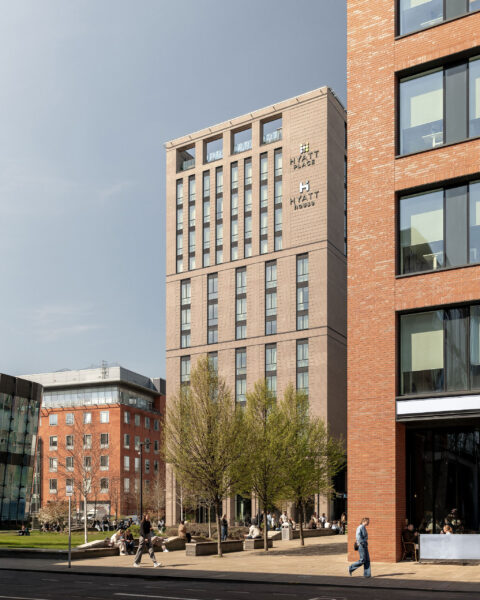
03 Approach to Design
Emblems of the city
Leeds has strong historical links to the Industrial era and was the very heart of the woollen and textile industry in the UK, particularly well known of the manufacture of woollen, flax and cotton dating back to the late 1700s in many of the large mill buildings which can be seen around the city today. The Interior design concept takes inspiration from this to place a subtle ‘Leeds’ emphasis on the interior features and finishes, the developed scheme would include elements such as images, photography and 3 dimensional objects within the artwork and accessories which will comprise the interior along with the use of textures and finishes to evoke the finish and texture synonymous with this historic trade.
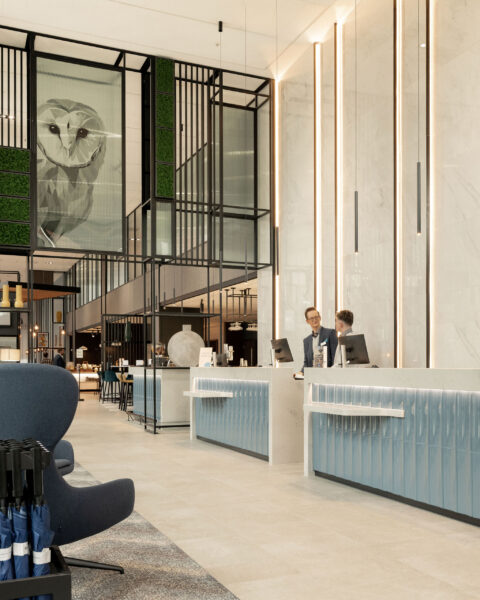
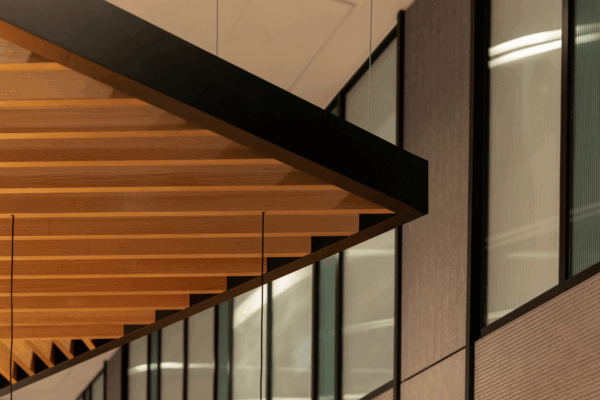
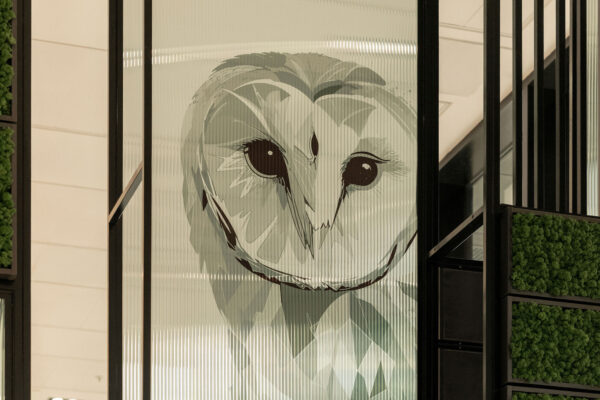
The history of Leeds and its owls are seen throughout the metropolitan city , and have been a long standing emblem of Leeds since the 1600s, originally started by Sir John Saville, the first alderman of Leeds. By incorporating these emblems into the details of the interior design it opens an opportunity to connect with the city and have a historical link to its time-line.


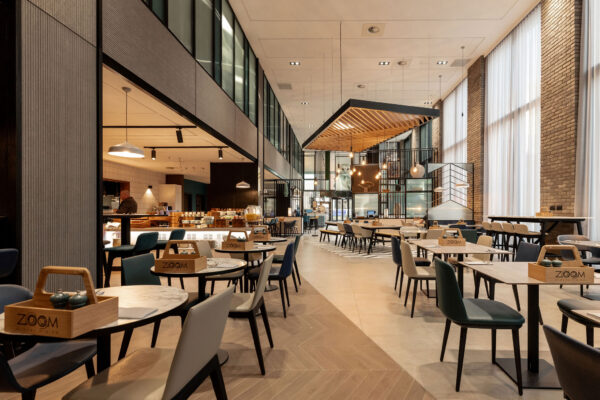
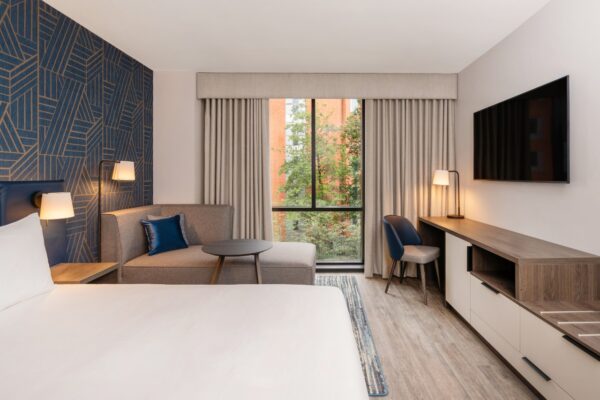
Latin cuisine, lively entertainment, and stunning city views
At the top of the building, Azotea Rooftop Bar & Restaurant, designed by Studio Two, introduces Leeds’ first vibrant Latin-inspired rooftop dining experience, complete with dual terraces and panoramic views across the city.
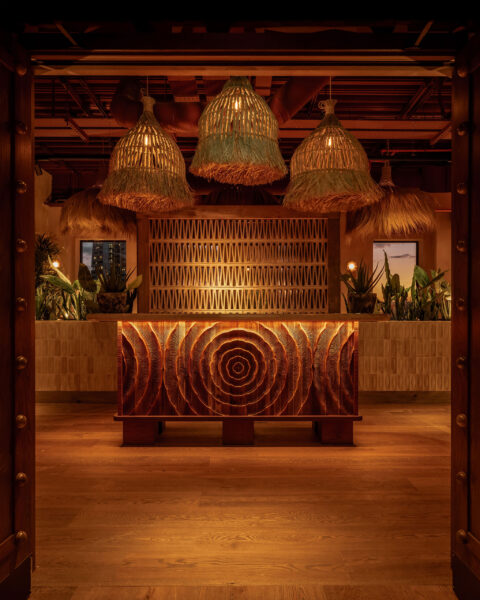


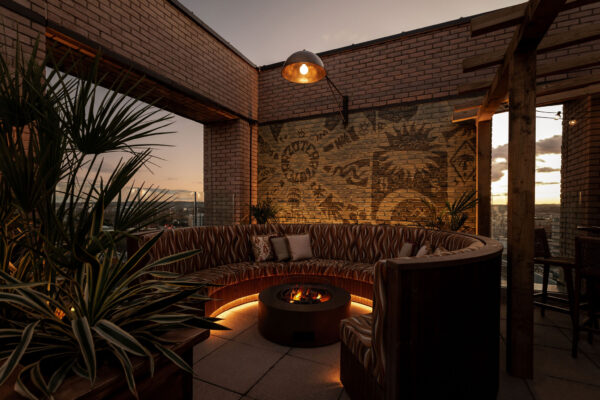
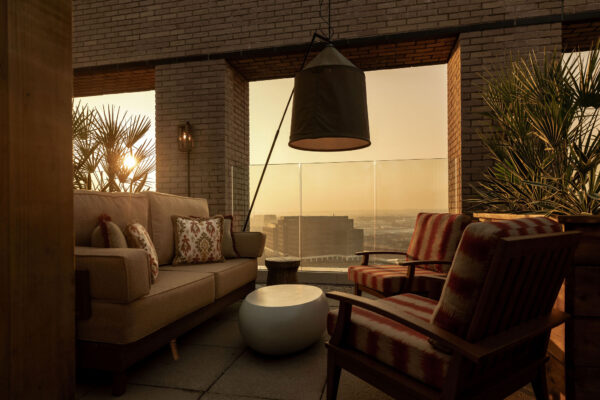
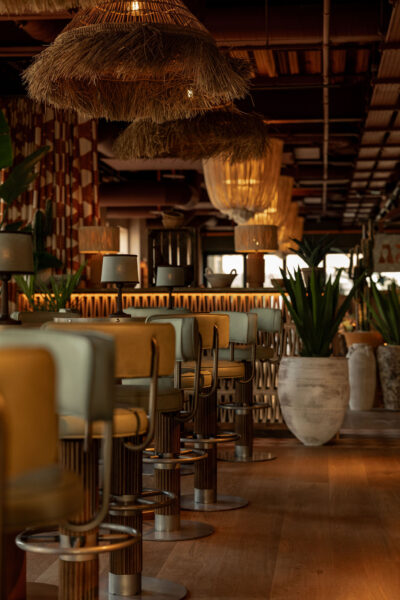
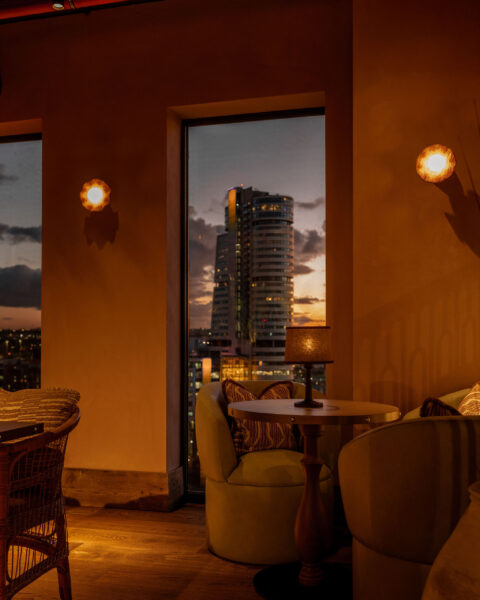
Photography by Stevie Campbell
Project team
Awards
